Hydraulic Seals
A hydraulic seal is a type of soft, non-metallic ring used to block fluid leakage in both hydraulic and pneumatic equipment. These seals are typically made from durable polymeric materials, including , PTFE, or polyurethane.
Within a single hydraulic system, multiple hydraulic seals are usually employed—each tailored to manage leakage at specific pressure zones. For example, a standard hydraulic cylinder assembly may rely on a combination of hydraulic cylinder seals , lip seals, piston seals, wear rings, and scrapers. Collectively, these components are often packaged and referred to as a seal kit.
The History of Hydraulic Seals
The creation and evolution of hydraulic seals closely parallels the broader development of hydraulic systems themselves, though true modern hydraulic seals only began to emerge with the advent and understanding of polymers.
The first known hydraulic system—developed by Joseph Bramah in England during the Industrial Revolution—relied on leather seals to perform functions that polymer-based seals fulfill today.
A key milestone in the history of sealing technology came in 1896, when J.O. Lundberg of Sweden invented the standard O-ring. Still, the most significant advancements in hydraulic seal design and performance came with the rapid progress in polymer science that unfolded during and after World War I.
Benefits of Hydraulic Seals
In nearly all hydraulic applications, hydraulic seals are essential components. Designing and operating a hydraulic system without them is neither practical nor sustainable. Such an approach would demand extremely precise machining, the use of exotic materials, minimal component stress, and highly specific fluid types—yet even under those ideal conditions, the system would likely experience premature failure.
Polymeric seals provide a cost-effective, reliable, and easily replaceable solution for fluid containment. They form an efficient barrier wherever fluid separation is required, making them indispensable in any hydraulic machine where dependable performance is expected.
Design of Hydraulic Seals
Hydraulic seals are typically manufactured using the same methods applied to other polymer-based mechanical components. Common production techniques include extrusion, injection molding, transfer molding, and pressure molding, each selected based on the material and design requirements of the seal.
Hydraulic Seal Materials
Seals are most often made from polymers such as nitrile, silicone, natural rubber, butyl, and styrene butadiene, though metals and even materials like leather or felt may be used in certain applications. Elastomeric seals are usually extruded, while Teflon seals are formed from powdered resin and sintered in an oven, as Teflon cannot be melted. Seals bonded to metal washers—often stainless steel, aluminum, brass, bronze, or carbon steel—rely on chemical bonding agents to create a durable, leak-resistant interface. These metal components are frequently galvanized or plated to prevent corrosion and enhance mechanical strength. In most cases, hydraulic seals are highly application-specific, with design considerations tailored to the exact environmental and mechanical demands they must meet.
Design Considerations
The engineering of hydraulic seals requires attention to a wide range of variables, including:
- Pressure and load conditions
- System dynamics and operating speeds
- Temperature extremes
- Expected service life
- Compatibility with fluid media
- Mating surface materials
- Seal geometry
- Environmental exposure
These factors not only influence material selection but also dictate design features and manufacturing processes. Given the complexity of these variables, it is essential to work with a manufacturer who understands the specific requirements of your application.
Additionally, a single hydraulic system may incorporate several different types of seals, each with its own geometry and stress profile, even if they operate within the same general environment. This variation underscores the need for a customized approach to seal design and selection.
Hydraulic Seals Images, Diagrams and Visual Concepts
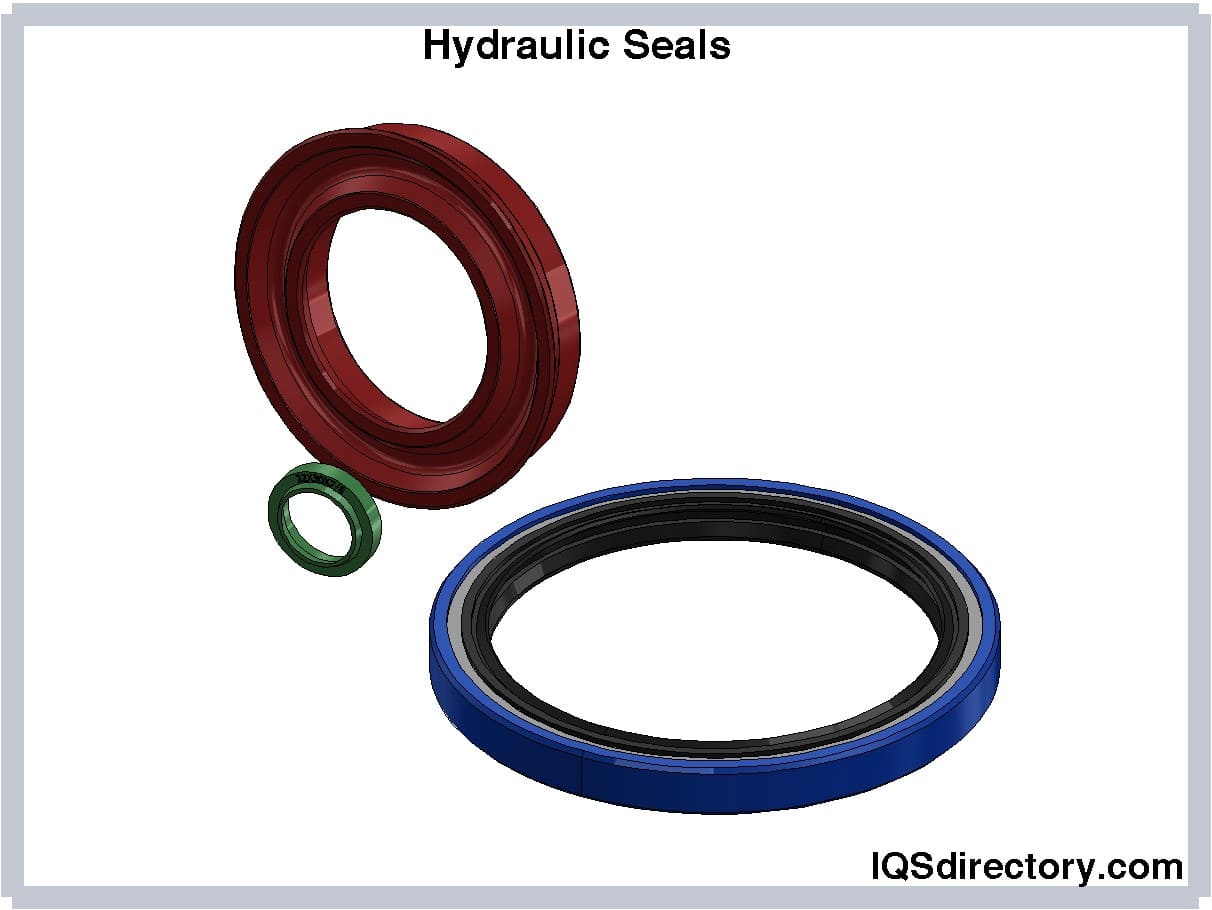 Hydraulic seals, used to fill gaps between hydraulic cylinder components.
Hydraulic seals, used to fill gaps between hydraulic cylinder components.
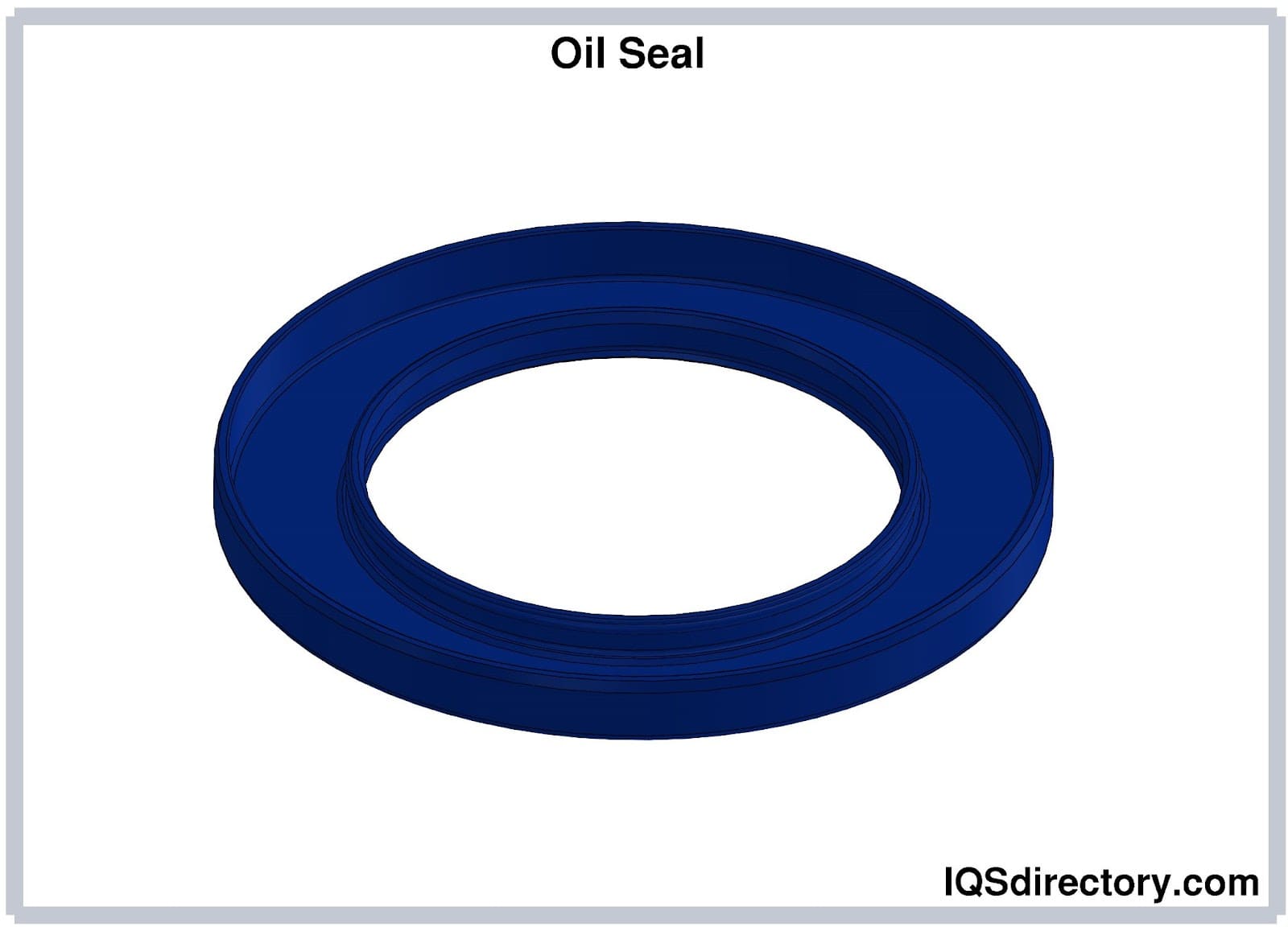 Oil seals cover gaps between stationary and moving components to keep lubricants from escaping.
Oil seals cover gaps between stationary and moving components to keep lubricants from escaping.
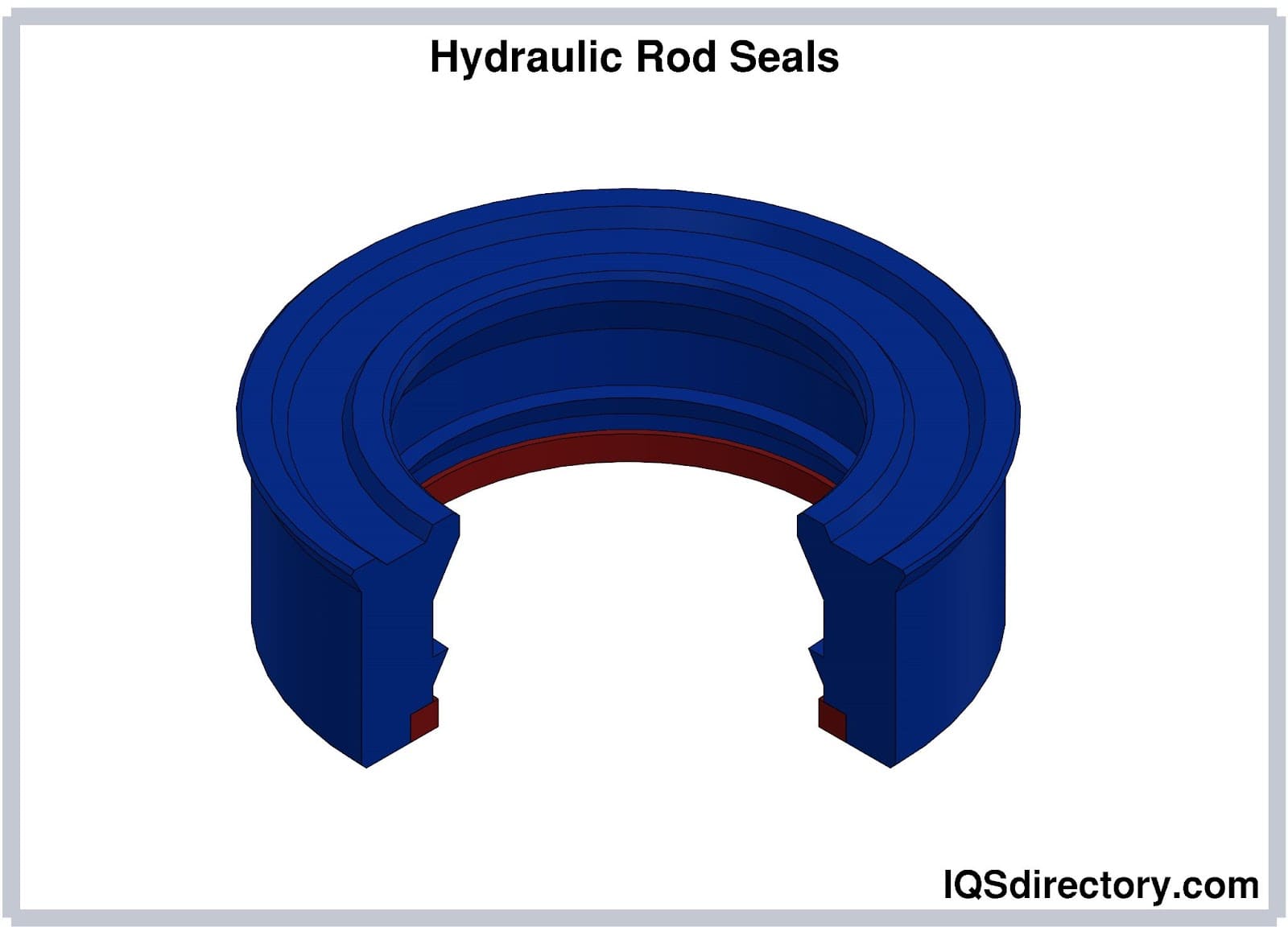 Hydraulic rod seals prevent fluid leakage from within the cylinder.
Hydraulic rod seals prevent fluid leakage from within the cylinder.
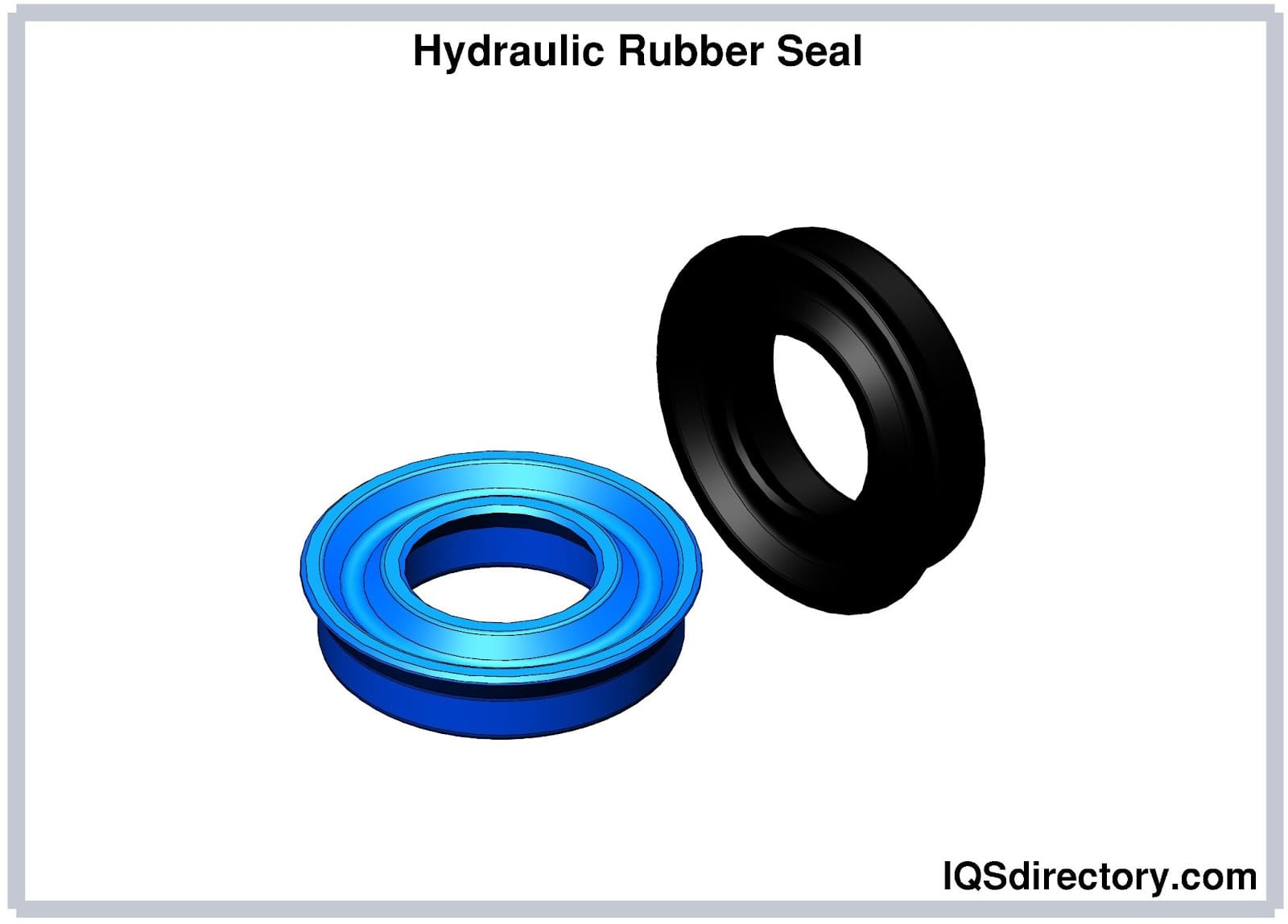 Hydraulic rubber seals elimination of vibration and has easy installation.
Hydraulic rubber seals elimination of vibration and has easy installation.
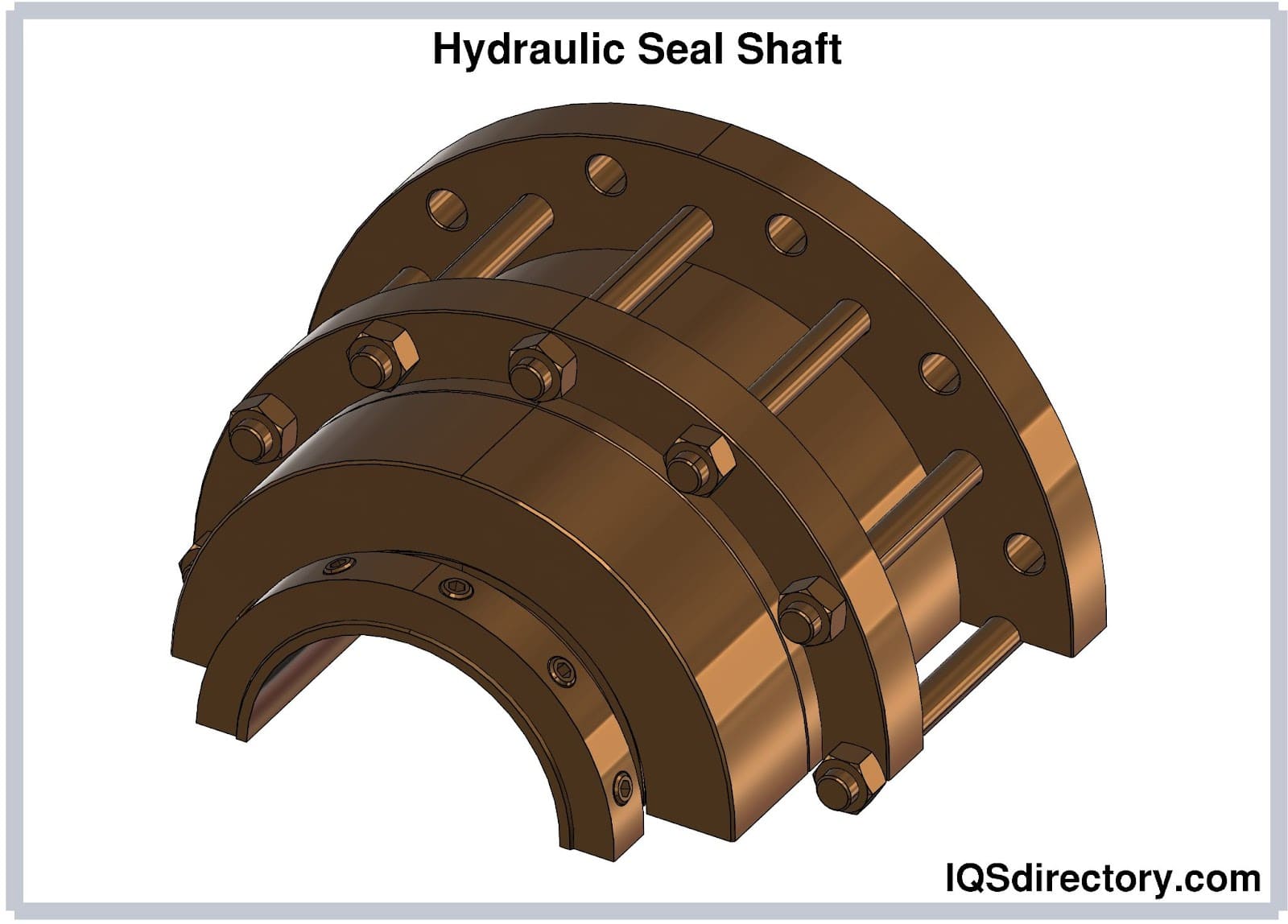 Rubber hydraulic seals are malleable, long-lasting, and crack-resistant.
Rubber hydraulic seals are malleable, long-lasting, and crack-resistant.
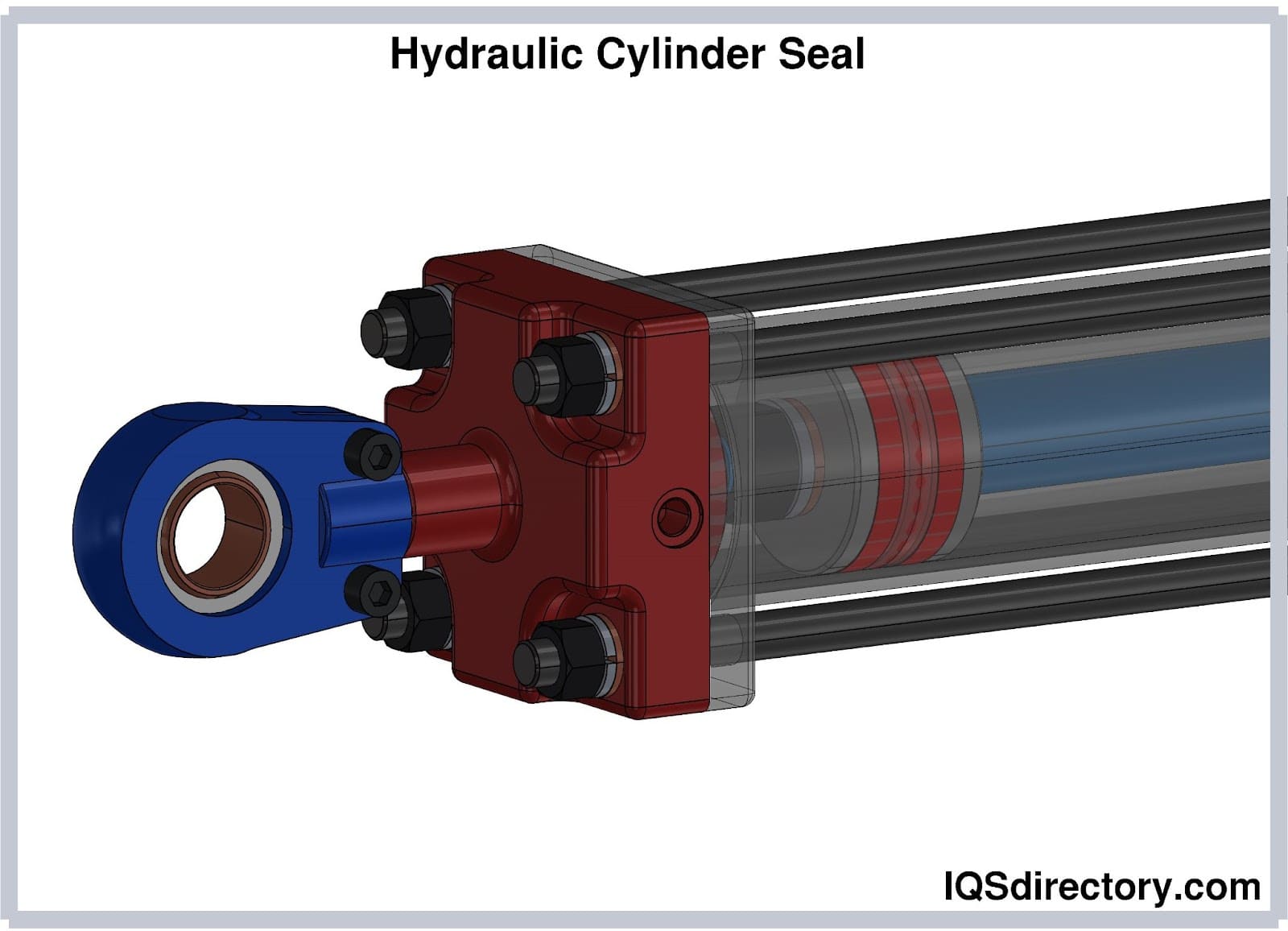 Hydraulic cylinder seals, seal openings between the parts of the hydraulic cylinder and designed to makes them retain hydraulic fluids while maintaining hydraulic pressure.
Hydraulic cylinder seals, seal openings between the parts of the hydraulic cylinder and designed to makes them retain hydraulic fluids while maintaining hydraulic pressure.
Types of Hydraulic Seals
Hydraulic Seal Types
Hydraulic seals fall into two main categories: static seals and dynamic seals. Static seals function much like gaskets, sealing fluid within confined, non-moving joints. Dynamic seals, on the other hand, operate in motion, typically around shafts or rods, and must withstand ongoing mechanical activity and fluid pressure.
Sealing Positions and Directions
Seals can also be classified based on their position and function: axial seals, rod (internal) seals, piston seals, and external (symmetric) seals. In hydraulic and pneumatic systems with axial movement—such as in pistons and cylinders—sealing direction is critical. Some seals are designed to handle pressure in one direction, while others are built to perform bidirectionally.
Dynamic Hydraulic Seals
Often referred to as shaft seals, these include rod seals and piston seals used in hydraulic cylinders. Their role is to retain pressurized fluid within the cylinder while preventing contaminants or air from entering. These seals typically feature a lip design that maintains tight sealing even with ongoing linear motion.
Lip Seals
These versatile seals are manufactured from a variety of elastomers, plastics, and rubbers. Lip seals, also known asrotary seals, provide reliable sealing in rotating machinery and are well-suited to handle dynamic applications.
Rubber and Teflon Seals
Rubber seals, especially those made with Teflon®, are among the most widely used due to their exceptional resistance to chemicals, temperature extremes, and moisture. These materials provide both durability and sealing strength in challenging environments.
Bonded Seals
These are composite seals that feature an elastomer bonded to a metal washer. Designed for high-pressure applications, bonded seals provide reliable static sealing under extreme conditions.
Oil Seals
Because many hydraulic systems operate with oil-based fluids, oil seals are crucial. Commonly made from materials like Teflon, polyacrylate, silicone, and fluoroelastomers, these seals withstand constant exposure to lubricants and prevent both leakage and system contamination. Regular inspection ensures long-term functionality.
Rod Seals and Axial Seals
Rod seals are typically radial and press-fitted into the bore of the housing. Axial seals are responsible for sealing components along an axial interface. When selecting seals, engineers must consider housing bore diameter, seal diameter, shaft dimensions, cross-sectional geometry, and application-specific parameters like temperature, vacuum rating, speed, and pressure limits.
Other Common Seal Types
Balanced Seals: Seals that are designed to reduce the effects of hydraulic pressure in the seal compartment.
Bellow Seals: Use a formed or welded bellows to supply a secondary sealing and spring loading.
Bidirectional Pressure Seals: Uniformly seal in response to pressure from both directions. Bidirectional pressure seals are also known as "double balanced seals" or "reversible balanced seals."
Isolators: A type of bearing seal used in place of oil seals to supply greater reliability.
Mechanical Seals: Prohibit fluid leakage around the rotating shaft in a state of extreme pressure, temperature and shaft speed. Typical uses for mechanical seals are for agitators, pumps, mixers and cryogenic seals.
O-Ring Seals: Sealing rings that have a circular cross section that is either solid or hollow.
Shaft Seals: Tools that help to prevent the contamination of hydraulic shafts. They are also used to help retain fluid pressure in hydraulic systems.
Teflon Seals: Seals that have been made from Teflon® or are coated with Teflon®.
Stainless Steel Seals: Often galvanized or plated for extra strength and protection against oxidation.
Hydraulic Seals Applications
To achieve the same level of fluid containment without the use of hydraulic seals is often impractical or entirely impossible. Such an attempt would require extreme precision in machining and would still suffer from rapid component wear. Hydraulic seals offer a more reliable and consistent solution, lasting significantly longer than precision-machined alternatives while remaining simple and cost-effective to replace when necessary.
Hydraulic and pneumatic systems, which rely on the repeated motion of rotating or reciprocating shafts and cylinders, depend heavily on the proper use of seals. These seals are critical in components such as rams, presses, mixers, braking systems, valves, conveyors, cleanrooms, and testing equipment. Among all these, hydraulic cylinders are where seals are most frequently found. These cylinders use pressurized fluids—typically water or oil—to power heavy machinery, and seals within them serve multiple roles. Located in the piston, cylinder head, or rod shaft, these seals prevent fluid from crossing the piston or escaping past the rod-head interface, and they stop fluid from leaking out of the cylinder altogether. In addition, seals help provide lubrication and reduce friction between moving metal components. Rod wipers and wear rings act as complementary sealing elements, blocking contaminants from entering the system when the rod retracts.
Hydraulic seals are used across virtually every industry that employs hydraulic systems. With the exception of rare, specialized cases, any machinery requiring separation or containment of fluid in a reciprocating motion will include hydraulic seals. As a result, their application spans a broad range of sectors, including:
Agriculture
Common in hydraulic systems used in tractors, harvesters, and other farm equipment.
Aerospace
Essential in systems like landing gear, control surfaces, and cargo doors.
Automotive
Found in brakes, power steering units, hydraulic pumps, motors, lifts, and gaskets.
Construction
Vital to equipment such as jackhammers, bulldozers, cranes, and excavators.
Entertainment
Often found in hydraulic systems used in amusement park rides and mechanical attractions.
Fitness
Used in hydraulic-based gym equipment that provides resistance through fluid compression.
Heavy Industry
Critical in mining, drilling, oil and gas extraction, and other high-demand industrial processes.
Manufacturing
Integral to automated systems, presses, packaging machinery, and more.
Printing
Play an important role in printing press operation and maintenance, maintaining pressure and alignment.
In short, wherever hydraulic power is needed, hydraulic seals are essential to ensuring efficiency, longevity, and system integrity.
Installation of Hydraulic Seals
Installation of hydraulic seals differs significantly depending on the type of seal and the configuration of the hydraulic system. Because of this variation, it’s best to consult the specific installation and usage instructions provided by the manufacturer of the system or seal in question for accurate guidance on proper installation.
That said, certain best practices apply across most situations. Always inspect each seal thoroughly before beginning installation, and keep the seal in its original, protected storage environment until just before use. This is especially critical when working with seals designed for high-stress applications or those made from materials with specialized properties.
Hydraulic Seal Standards and Specifications
Hydraulic seals are subject to a range of standards and regulations at the international, national, and local levels, depending on their type and application. It is essential to verify all applicable compliance requirements related to your specific use case, including those tied to industry norms, environmental conditions, and the operational demands of your equipment.
In most standard applications, reputable manufacturers will already be well-versed in these compliance and safety standards, ensuring that the seals they provide meet all necessary regulations for proper and safe use.
Things to Consider When Purchasing Hydraulic Seals
-
Seal Environment
The environment in which your hydraulic seals will operate is just as critical as the application itself.
Maintenance Requirements
Different hydraulic seal options come with varying maintenance needs, so it’s important to factor this into your decision-making.
Upgrades or Expansion
Future plans for scaling or upgrading operations may influence which hydraulic seal solution is most practical today.
Seal Consistency
Long-term precision and operational reliability should be key considerations when selecting seals for your system.
Order Size
Some sealing solutions scale more effectively than others, making current and future order volumes an important part of your selection process.
Choosing a Good Hydraulic Seal Manufacturer
Transparent Manufacturing
A reliable hydraulic seal manufacturer should be upfront about their processes, materials, and capabilities. Openness builds trust and sets clear expectations.
Guarantees and Warranties
Strong manufacturers back up their products with written guarantees or warranties, demonstrating confidence in their quality and performance.
Good Referrals
Positive feedback and testimonials from industry-relevant clients are essential indicators of a manufacturer's track record and credibility.
Certifications and Compliance
Manufacturers should meet all applicable standards and maintain compliance with national, local, and international regulations where necessary.
Experience in the Industry
Proven experience matters. While new manufacturers aren’t necessarily bad, a history of successful work in the field helps ensure reliability and reduces risk.
Choosing the Right Hydraulic Seal Manufacturer
Seal Familiarity
Finding a manufacturer experienced with your specific type of hydraulic seal—whether piston, rod, or rotary shaft—is essential. A supplier familiar with similar applications will better understand your performance expectations, installation environment, and follow-up needs.
Hydraulic Seal Scale
Volume compatibility matters. A manufacturer geared toward high-volume orders may deprioritize smaller clients, while one focused on small batches may struggle to scale with your needs. Consider not only your current order volume but how it may change over time.
Compatible Logistics
A manufacturer with logistics that align with your delivery windows, inventory cycles, and packaging preferences can significantly reduce supply chain friction and lead times.
Versatility of Seals
If you anticipate evolving your sealing requirements, a versatile manufacturer will prove more valuable long-term. Look for a partner capable of adapting to design changes, new materials, or varied sealing environments.
Manufacturer Communication
Consistent, responsive communication is key. Whether you prefer detailed emails, quick calls, or collaborative platforms, choose a manufacturer whose communication style complements your workflow.
Proper Care for Hydraulic Seals
-
Regular Checkups
Hydraulic seals should remain a top priority during routine maintenance inspections to catch wear or failure before it becomes a costly issue.
Proper Storage
Seals not in use must be stored carefully to avoid deformation, contamination, or degradation that could compromise their integrity when installed.
Accurate Selection
Selecting the right hydraulic seal from the outset ensures better system performance, reduced wear, and fewer issues over time. A properly matched seal makes all the difference in longevity and reliability.
Observation and Analysis
Monitoring system performance helps identify whether a seal is limiting efficiency or causing premature wear. Performance trends often reveal when it's time to upgrade to a better-suited sealing solution.
Preventative Maintenance
For many applications, preventative maintenance—including scheduled inspections and replacements—is vital for maximizing the effectiveness and lifespan of hydraulic seals.
Hydraulic Seals Accessories
It’s challenging to identify specific accessories for hydraulic seals due to the vast diversity of applications, industries, and seal types involved. For general purposes, options are limited—stainless steel storage containers, for instance, may offer practical storage solutions. Beyond that, accessory selection should be based on the broader hydraulic system in use rather than on the seals themselves.
Hydraulic Seal Terms
-
Abrasion
The surface loss of a material caused by friction.
Abrasion Resistance
A material’s resistance to the surface loss caused by frictional forces.
Adhesion
A state in which two surfaces are bonded together through interfacial forces.
Axial Movement
Motion along an axis or parallel to the center line of a shaft.
Bellows
A component made from corrugated plastic or rubber around a shaft that has the ability to stretch.
Bill of Material
A list of all materials needed to manufacture a certain product.
Bloom
A change of appearance in rubber, resulting from a solid or liquid material moving towards the surface. Bloom resembles surface dust.
Brittleness
The tendency of a material to crack under deformation.
Conductive
A material's property of being able to conduct/transmit electricity.
Cross Section
The view of an o-ring when cut at a right angle to the axis, which shows its interior construction.
Excluders
Used in a hydraulic or pneumatic cylinder to exclude or scrape the rod clean.
Flow
A material's ability to move in a mold during the molding process.
Friction
The resistance to motion when two surfaces are in contact.
Oxidation
Occurs when a material's surface reacts with oxygen, usually causing a change in the appearance or texture of the surface.
Plug
A conical rubber component pressed into a hole or tube to finalize a seal.
Porosity
The measure of small holes in a material.
Resilience
A material's ability of returning to its original state after deformation.
Shrinkage
The tendency of a material to contract while cooling.
Spacer
A ring with flat sides to provide specific dimensional spacing between two components.
Viscosity
The resistance of a material to flow under stress.
Washers
Round, flat rings used as spacers, gaskets or slip devices under the head of a bolt.

